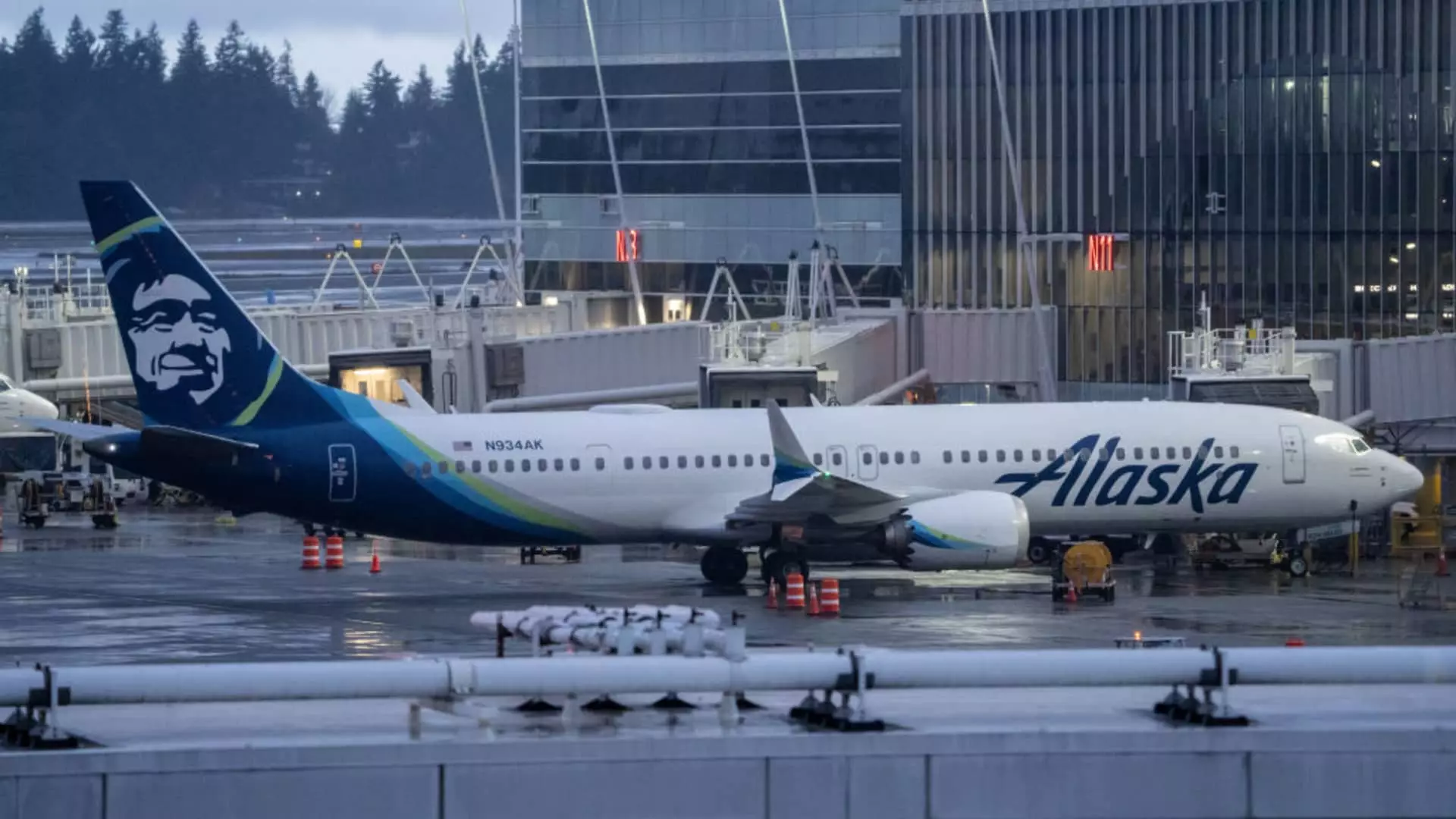Alaska Airlines is grappling with a diminishing demand landscape as it navigates through the second quarter of the fiscal year. The airline’s announcement on Wednesday about expected earnings challenges has sent ripples through the aviation sector, echoing what many carriers are experiencing in this volatile economic climate. Arizona has recently merged with Hawaiian Airlines, which may have provided them with some market advantage, but the current economic conditions are shaking the foundation of even the most robust players.
Despite the airline reporting a stabilization in bookings, the company projects a significant headwind of six percentage points due to “softer demand.” This indicates both a cautious approach to future forecasts and a recognition that the previous boom may have been more of an anomaly than a new norm. With unit revenue expected to either stagnate or decline by as much as 6% year-on-year, the reality of economic uncertainties and shifting consumer behavior emerges front and center.
Economic Challenges and Financial Outlook
What’s particularly striking is the airline’s reluctance to update its full-year guidance amid these uncertainties. This scenario, marked by an anticipated adjusted earnings per share of only $1.15 to $1.65, starkly undercuts the $2.47 anticipated by Wall Street analysts. Here lies the crux: while the airline’s revenue surged 41% year-over-year during the first quarter, it still landed below expectations, demonstrating that the financial landscape is increasingly fraught with unanswered questions.
CFO Shane Tackett’s remarks illuminate a dilemma: although bookings are ongoing, they are attracting lower-than-expected fares. This could signify a shift in consumer willingness to spend, possibly due to inflationary pressures or a change in travel priorities. It raises an essential conversation about how airlines adapt their pricing strategies during downturns without alienating their customer base. Tackett’s observation encapsulates a pervasive sentiment within the industry: while demand remains, it is not on the same upward trajectory once anticipated.
Leadership and Future Adaptability
Amid these challenges, CEO Ben Minicucci’s statement underscores a powerful ethos of resilience centered around safety and performance. His confidence in Alaska’s foundational strengths reflects a broader optimistic outlook—characteristics that could enable the airline to withstand the impending turbulence. Their commitment to operational excellence will be crucial as they pivot to face emerging market realities.
Moreover, the airline industry’s outlook, once brightened by a rebound in travel demand post-pandemic, now looks a bit more clouded. However, if Alaska Airlines can effectively leverage its operational efficiencies and maintain high safety standards, it could carve out a unique position in the competitive atmosphere.
While the company anticipates profitability even amidst revenue pressures in the latter half of the year, discerning how it navigates these complex waters will be vital. Market perception will largely hinge on how well Alaska balances consumer expectations with sustainable financial practices, all while maintaining its reputation as a trusted travel partner.
While Alaska Airlines faces legitimate challenges in the short term, its commitment to safety, performance, and adaptable strategies will be critical in effectively maneuvering through this economic turbulence.


Leave a Reply